Your Tasmanian bucket list
Power, glory and other natural phenomena
In the first of our bucket-list series, here's a bunch of unmissable natural spectacles and phenomena to chase on your next trip to Tasmania.
Southern Lights
Hunting Aurora Australis
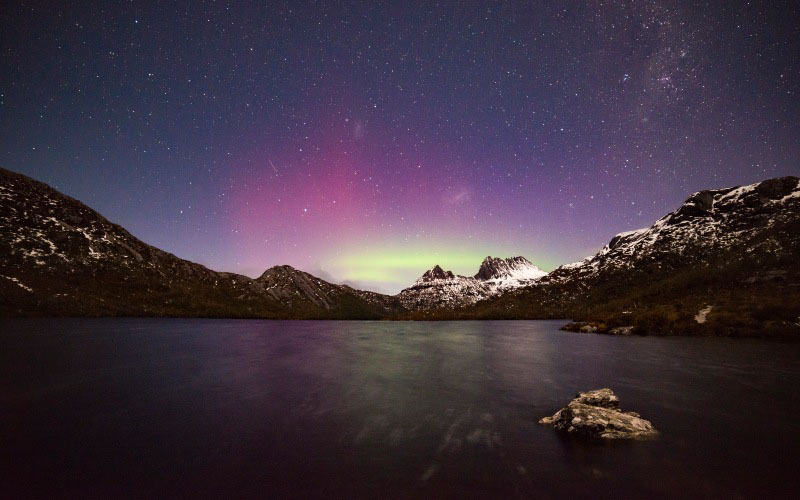
Aurora Australis, seen above Cradle Mountain in Cradle Mountain-Lake St Clair National Park.
Photo: Pierre Destribats
The Northern Lights, or Aurora Borealis, are a major draw for global travellers to Arctic regions, yet many are yet to discover the southern equivalent, Aurora Australis. One of the few places in the world to see this majestic southern light show is in Tasmania.
Auroras occur when fully charged particles burst from the sun, creating solar wind. This solar wind is drawn to both the North and South poles, and this produces the light shows. The southern version can be elusive, however. Though it can be viewed year-round in Tasmania, you’re most likely to witness the spectacle in winter, from a remote southern location with low light pollution and cloud, and a broad view south.
The lights can be dull or invisible to the naked eye, so you’ll need a DSLR camera and a tripod. The lens needs to be as wide as possible and same goes for aperture. This allows maximum light into the camera (lowest f-stop, about f/2.8 to f/4). Opt for your camera’s highest ISO (800 to 3200 is a good starting point) and a shutter speed from 5 to 15 seconds. Lastly, set your focus to infinity and you're set to capture the show. Chase the lights by following the Aurora Australis Tasmania Facebook group, in which locals post real-time updates when an aurora is dancing. Good luck.
Turning of the fagus
Fifty shades of autumn
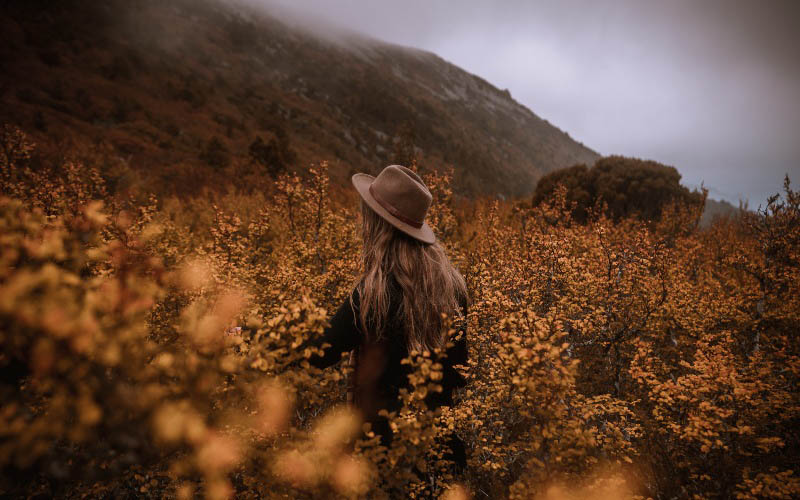
The turning of the Fagus, a natural phenomenon only in Tasmania.
Photo: Emilie Ristevski
From late April into May, Tasmania’s deciduous beech,Nothofagus gunnii aka fagus, turns brilliant shades of gold, orange and rusty red, creating a unique seasonal spectacle in national parks. The fagus is found only in Tasmania. Among the most accessible spots to see the turning of the fagus are the Tarn Shelf and Lake Fenton in Mount Field National Park, where glacial lakes are fringed with fagus gold. Fagus also turns on the Dove Lake circuit and the Crater Lake walk, in Cradle Mountain-Lake St Clair National Park. To witness this natural phenomenon in its full glory, follow the fagus on Discover Tasmania’s social media pages (@tasmania) and watch Tasmania Parks social pages.
Breathe the freshest air
Inhale and hold
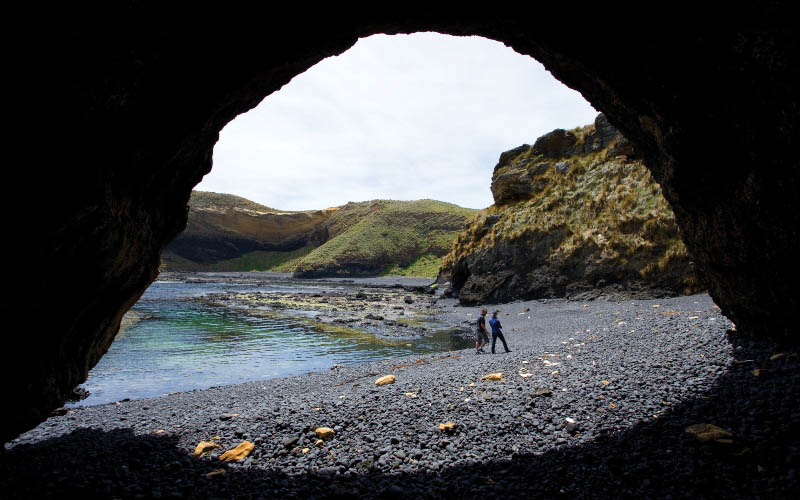
Walking beaches in the takayna/Tarkine forest reserve, north-west Tasmania.
Photo: Off the Path
The Roaring Forties sweep across Cape Grim, on the far north-west tip of Tasmania, bringing with them some of the world’s cleanest air. These currents located in the latitudes between 40 and 50 degrees south force air across thousands of kilometres of open ocean before finally reaching land in Tasmania. The CSIRO has maintained a research station at Cape Grim since 1976, creating a global baseline to chart increasing levels of pollution around the world. These measurements show Cape Grim has the cleanest air in the world. Breathe deep.
Forest bathing
Rare rainforest meets coastal heath
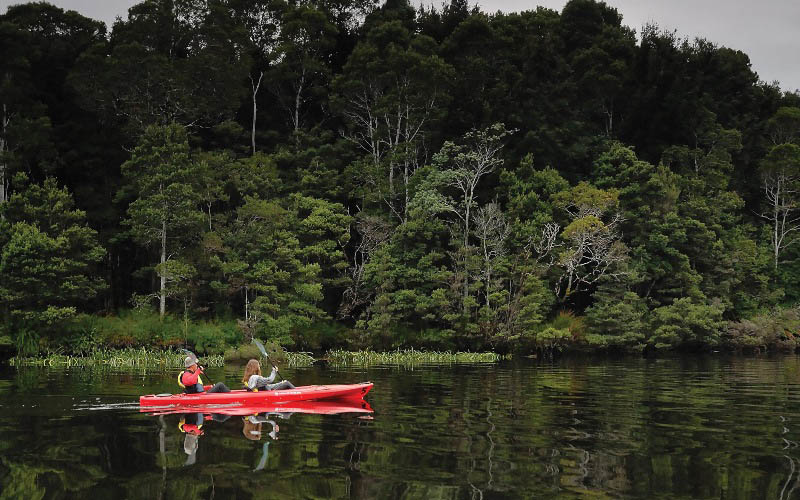
Kayaking through the takayna/Tarkine forest reserve, north-west Tasmania.
Photo: Michael Walters
Find your deeper green in takayna/Tarkine in Tasmania’s north-west, amongst 447,000 hectares of forest, wild rivers, exposed mountains, magnesite cave systems and extensive coastal heath. The Tarkine has the largest tract of temperate rainforest in the southern hemisphere and has sacred significance to Tasmanian Aboriginal custodians. Connect to nature culturally, spiritually and physically at the edge of the world.
Seriously big waves
50kmh barrels on Tasmania’s southern tip
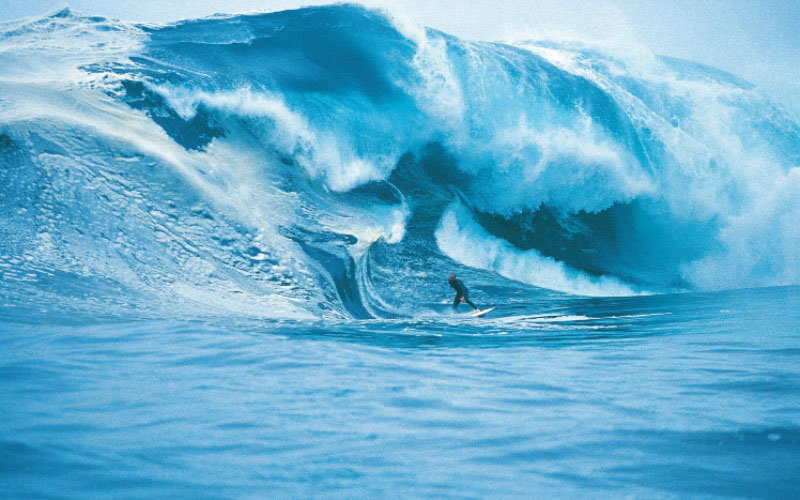
Surfing Shipstern Bluff, Tasman Peninsula.
Photo: Andrew Chisholm
The highest sea cliffs in Australia flank the Tasman Peninsula, in the island’s south, and from here you can climb Shipstern Bluff and watch an epic surf show. Known locally as Shippies, the waves here reach nine metres and are among the most challenging on Earth, accessible to only the most experienced surfers towed into the surge by jet skis. The rest of us can watch the sets roll in from high on the bluff, and feel part of something much bigger than ourselves.
Meet the world largest carnivorous marsupial
Expect devilish behaviour
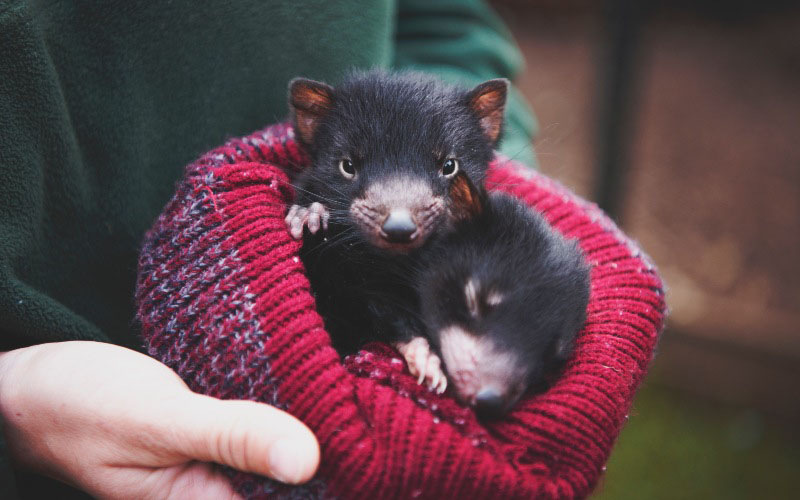
Tasmanian Devils.
Photo: Lauren Bath
Among the relatively large number of endemic species in Tasmania, found nowhere else on Earth, is the endangered, nocturnal and shy Tasmanian devil. Lucky walkers can observe them in the wild, though the devils can more reliably be seen at wildlife parks around the island, including Bonorong Wildlife Sanctuary, Devils@Cradle and the Tasmanian Devil Unzoo. Named by early European settlers for its unearthly screams and guttural growls, the devil is a scavenger that feeds on entire carcasses, including bone. Two other carnivorous marsupials inhabit Tasmania: the spotted-tailed quoll, and the eastern quoll.
Image Requests
For high resolution photographs used in this article, please reach out to our PR & Earned Media team at media@tourismtasmania.com.au or join our Visual Library.